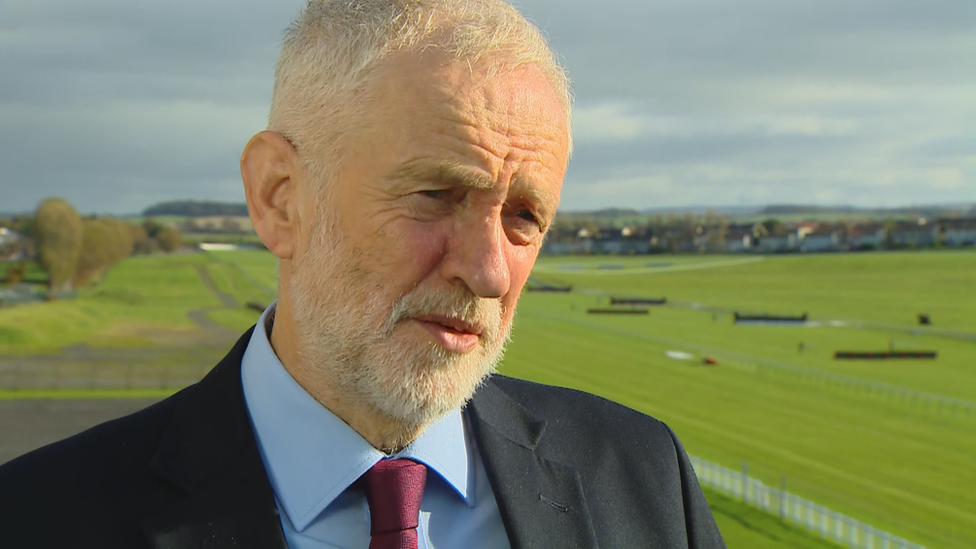Marginal seats 2019: Where are the seats that could turn the election?
- Published

There are 650 constituencies in the UK but most of the campaigning for the general election will take place in a smaller number.
As ever, much of the focus will be on marginal constituencies - places where the winning majority in 2017 was small.
However, at this election the parties will also be targeting a large number of constituencies beyond the marginal seats.
There will be a lot of focus on areas that voted strongly to Leave or strongly to Remain in the EU referendum - even where the majorities are large. Big swings cannot be ruled out.
Marginals and ultra-marginals


A striking aspect of the 2017 general election was that the result in lots of constituencies was very close.
The normal working definition for a marginal seat is one where the majority is under 10%, which usually means under about 5,000 votes - although that does depend on turnout and the size of the constituency.


Then, within that group of seats, there are the ultra-marginals: places where the majority is under 2% - about 1,000 votes.
In 2017 there were 51 of these ultra-marginals - considerably more than in previous elections. In fact there were eight seats with a majority under 50.
All those will be hotly contested. The Conservatives will be hoping to win back some of the seats they lost last time - like Canterbury, external, Keighley, external and Kensington, external - while Labour will try to take seats where it got within a whisker - such as Arfon, external, Pudsey, external and Southampton Itchen, external.
And the Lib Dems will hope to win seats they've previously held like Richmond Park, external, St Ives, external and Sheffield Hallam, external.

Scotland
In Scotland there are 46 marginal seats, using the 10% definition, out of a total of 59. So almost all the constituencies are potentially in play.
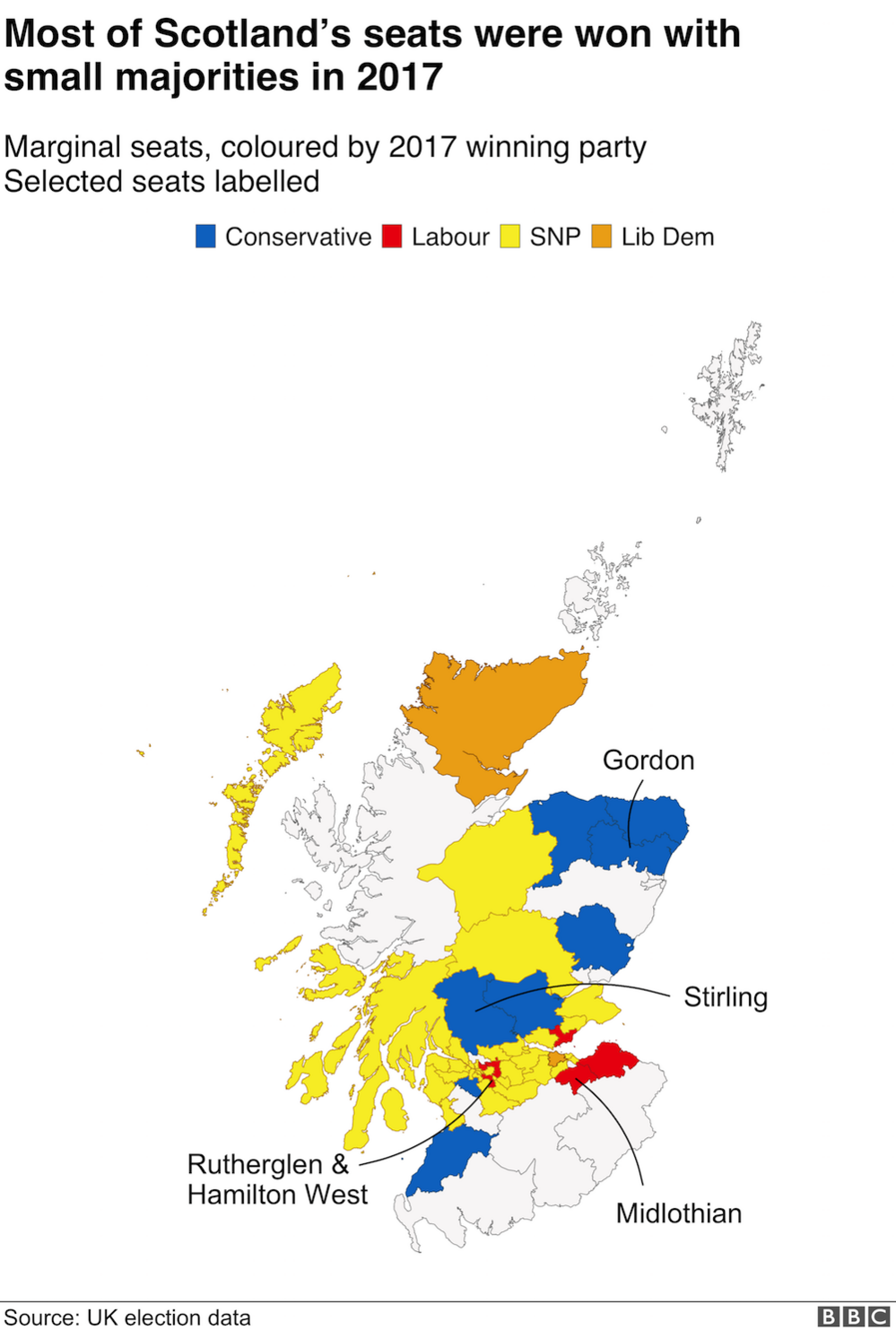

Of particular interest will be the 21 seats lost by the SNP in 2017. Nearly all voted Remain in the EU referendum so the SNP hopes its anti-Brexit stance will help it to recapture as many of them as possible.
In many cases it would only take a small shift - places like Stirling, external and Gordon, external, held by the Conservatives, and Rutherglen & Hamilton West, external and Midlothian, external, both held by Labour.
Another seat to keep an eye on is Fife North East. It's the most marginal constituency in the whole country with an SNP majority over the Liberal Democrats of just two votes. In fact, that's the smallest majority in any seat this century.
Leave and Remain
It's not just Scotland where Brexit will influence which seats are targeted. Strongly Leave and strongly Remain areas are likely to be crucial.
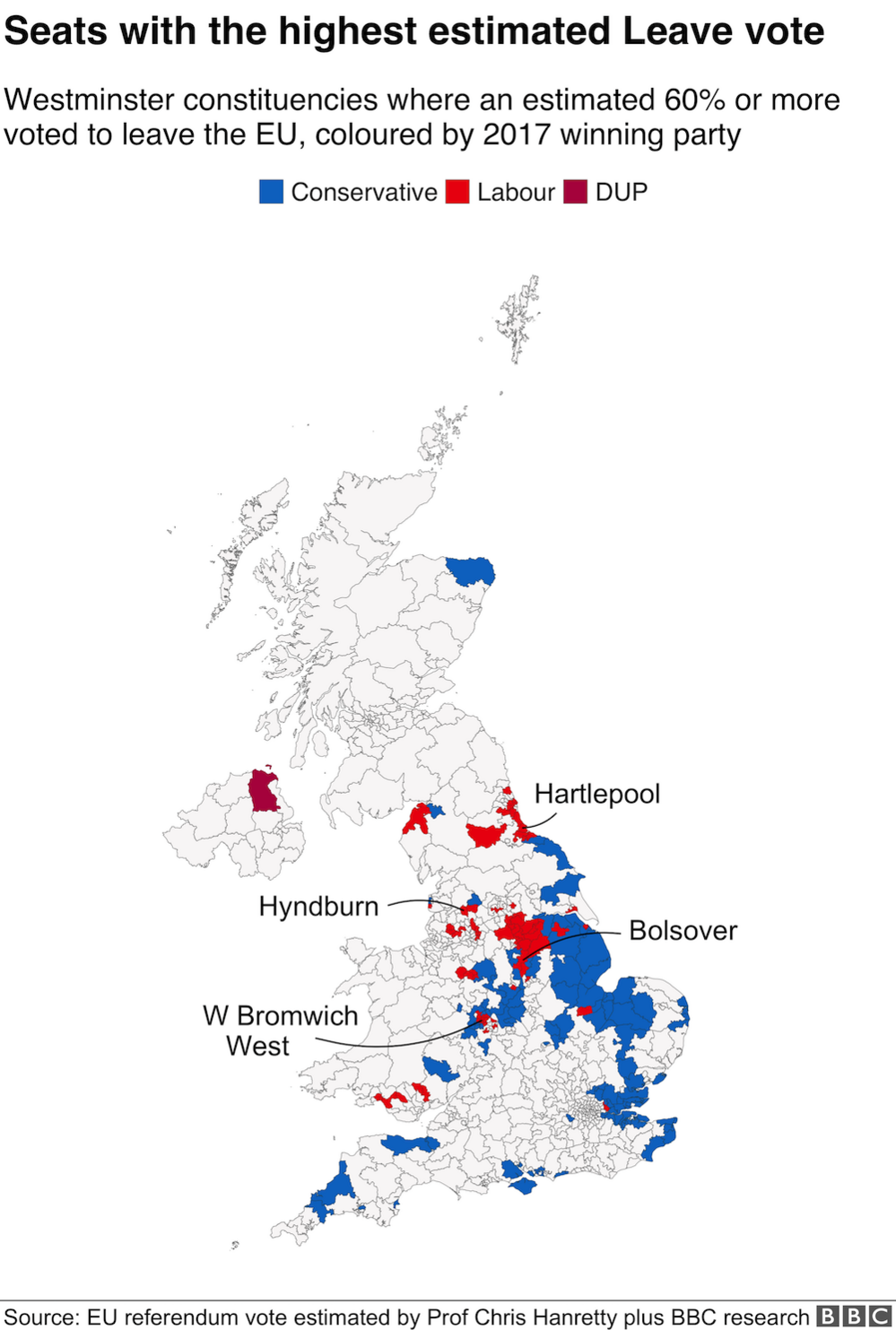

The Conservatives are hoping to capture longstanding Labour constituencies that voted heavily to Leave - even those outside the normal marginal range.
The map shows that these are concentrated in the Midlands and parts of the north of England - seats like West Bromwich West, external, Bolsover, external, and Hyndburn, external.
However, the Brexit Party has a similar goal. It describes Hartlepool, external as its number one target.
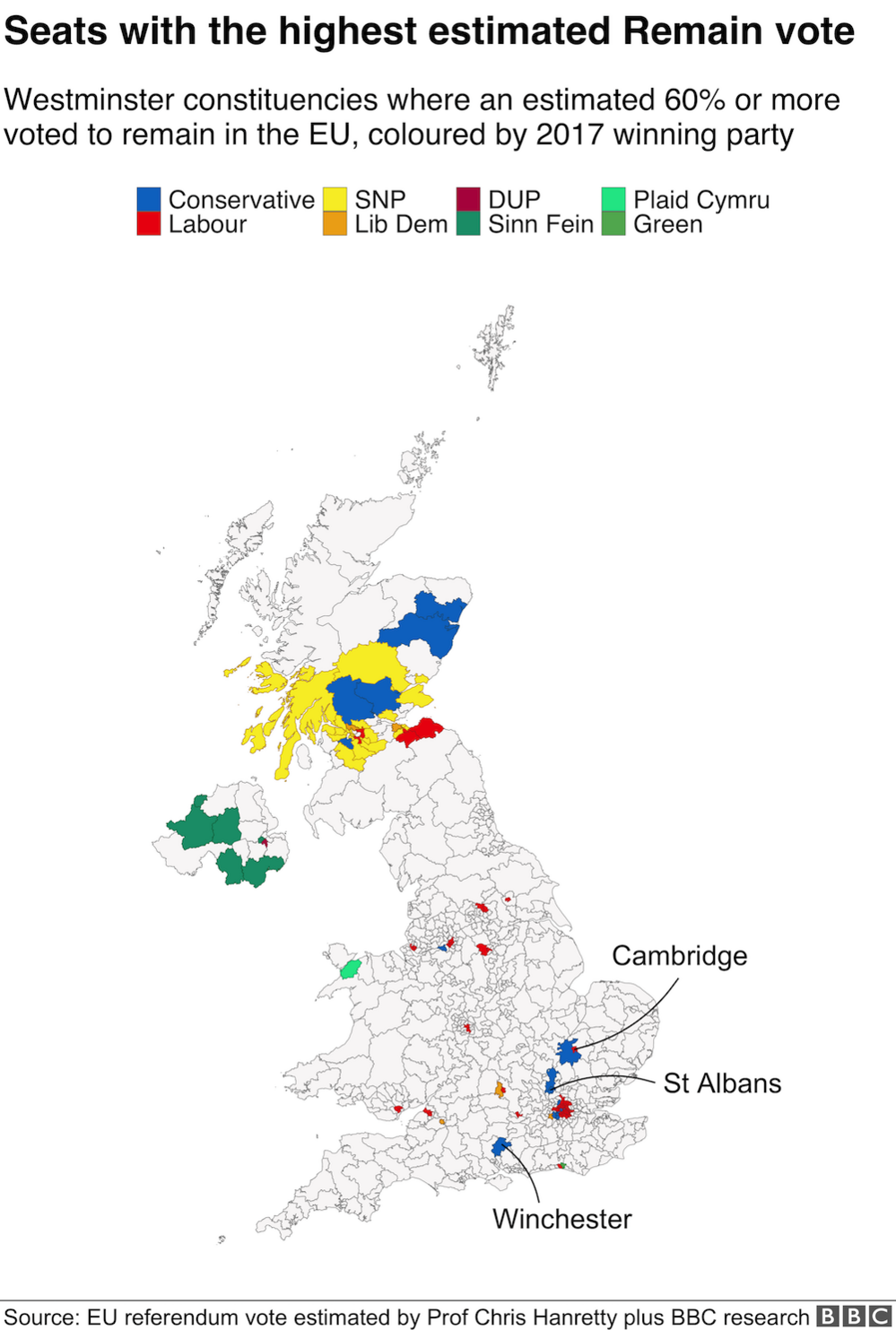

On the other hand, the Liberal Democrats are targeting heavily-Remain seats, mostly in the south of England, even though some have quite big majorities. Places like St Albans, external, Winchester, external, and Cambridge, external.
Remain pact
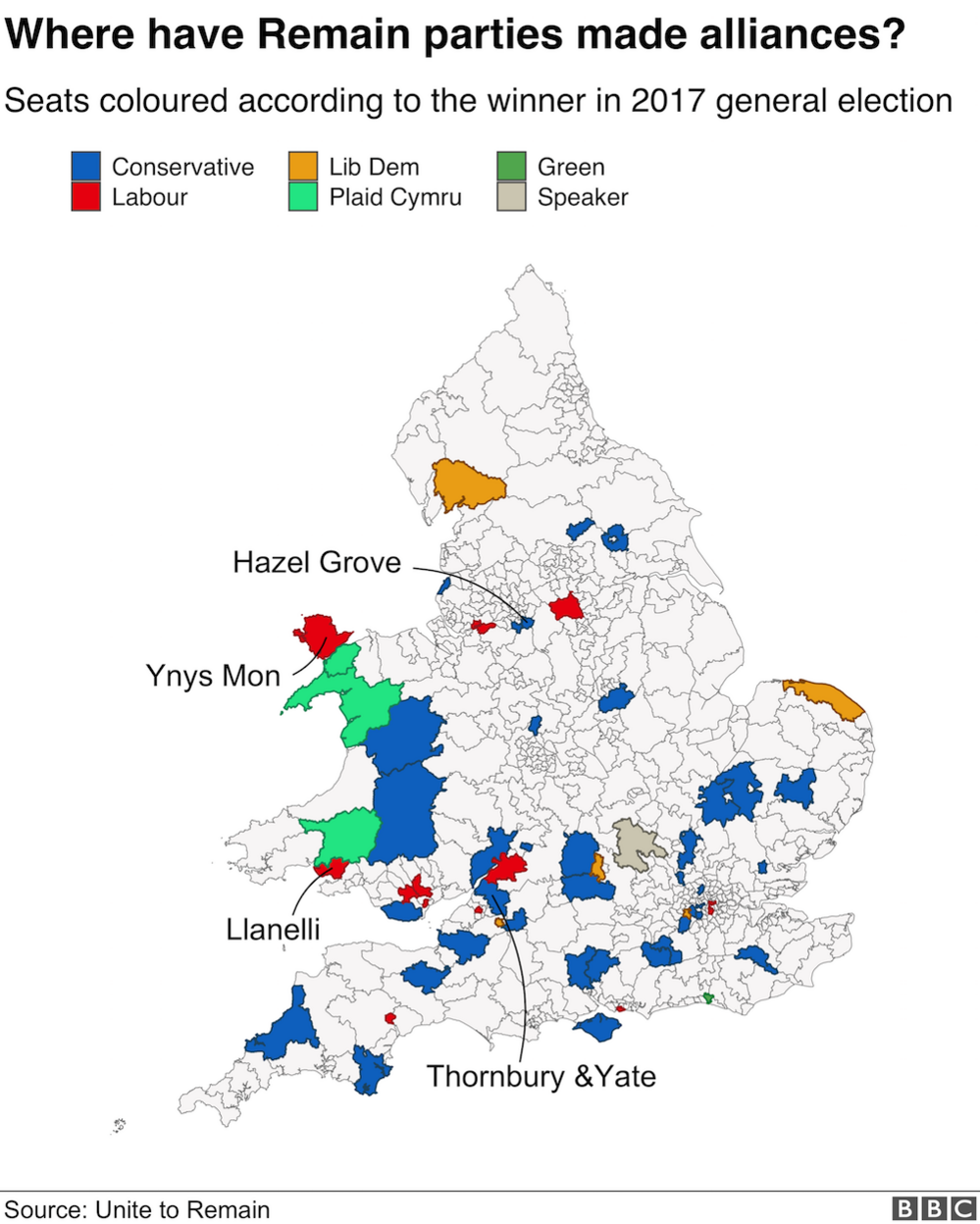

Another feature of the Brexit battle at this election is the agreement made by the Liberal Democrats, Plaid Cymru and Green Party to stand aside for one another in 60 seats across England and Wales.
It's impossible to know whether this will affect who wins any of the constituencies but it should give a boost to Plaid in places like Llanelli, external and Ynys Mon, external and to the Lib Dems in seats including Hazel Grove, external and Thornbury & Yate, external.
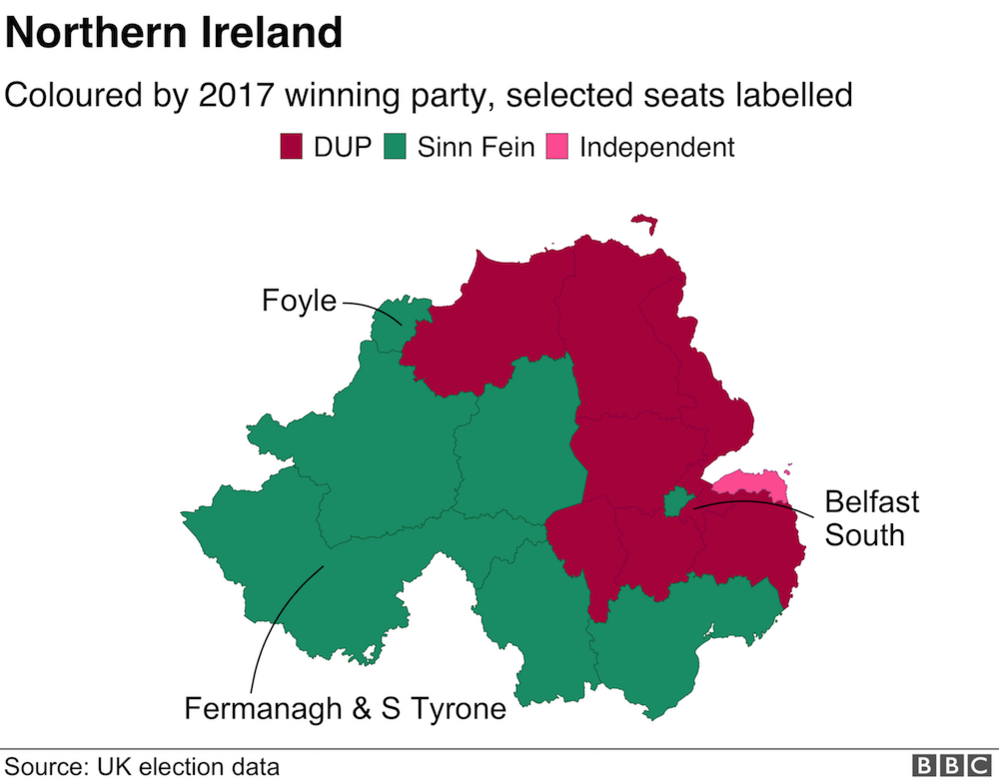

Where parties choose to put up candidates could have a bigger impact in Northern Ireland than anywhere else.
In Belfast South, external, for example, Sinn Fein is standing aside in favour of the SDLP to increase its chances of ousting the DUP. The SDLP will return the favour in Belfast North.
Meanwhile in Fermanagh & South Tyrone, external the DUP will stand aside to assist the UUP, as it did in 2017.
Another seat to keep an eye on is Foyle, external where it's a different story. It's the most marginal constituency in Northern Ireland and was a Sinn Fein gain from the SDLP last time.


One of the features of recent general elections has been Labour's increasing dominance in London.
As a region it used to be fairly representative of the whole country, politically speaking, but over time that has changed. In 2017 Labour won 49 of the 73 seats across the city.
There's also evidence that the effect has started to spill out from central London to the outskirts and to constituencies in the surrounding areas.
That seems to be linked to an increase in the number of people leaving London - especially those in their 30s and 40s.
Labour will be hoping that this demographic change could help it in seats like Chingford & Woodford Green, external, Crawley, external, and Milton Keynes South, external - all popular destinations for people leaving London.
- Published11 November 2019
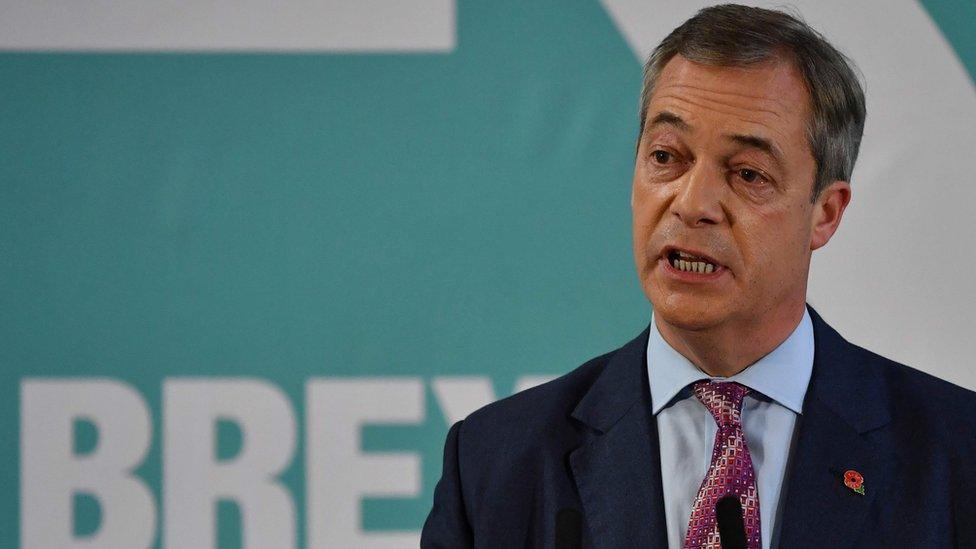
- Published12 November 2019
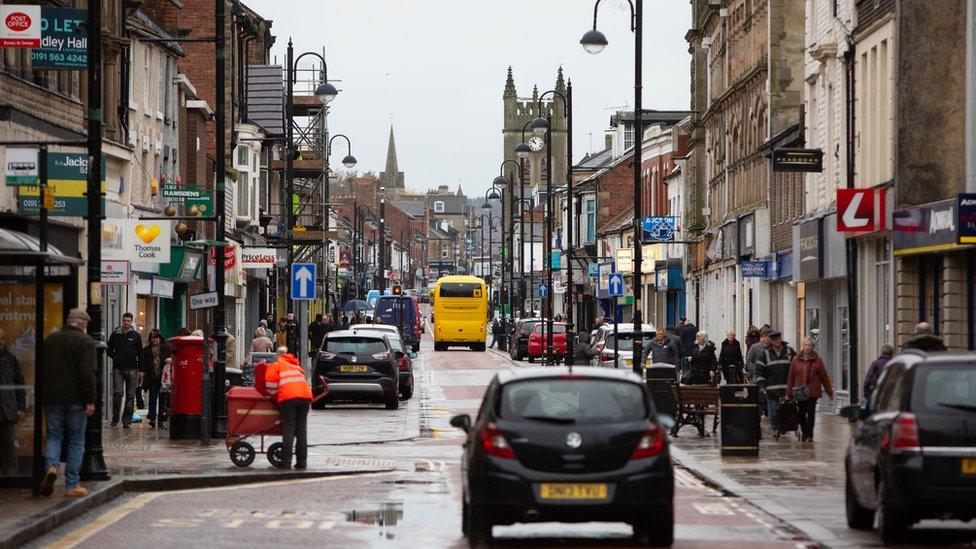
- Published7 November 2019

- Published13 November 2019

- Published27 October 2019
